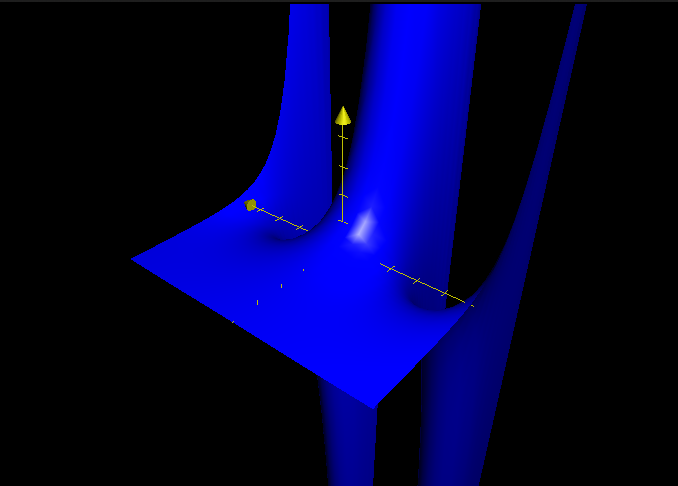Backlinks
1 Integration by Parts, Problem 1
Calculate the following anti-derivative
\begin{equation} \int\! \ln(x) \,dx \end{equation}
We perform integration by parts on this expression:
\begin{align} & \int ln(x) dx \\ \Rightarrow & \int ln(x) \cdot 1 dx \\ \Rightarrow & xln(x) - \int \frac{1}{x} \cdot x\, dx \\ \Rightarrow & xln(x) - \int 1 dx\, \\ \Rightarrow & xln(x) - x \end{align}2 Integration by Parts, Problem 2
Calculate this anti-derivative, too, by hand
\begin{equation} \int\! x^5 \sin(x)\,dx \end{equation}
We again perform integration by parts on this expression:
\begin{align} & \int x^5 \sin(x)dx \\ \Rightarrow & -x^5 \cos(x) + 5\int x^4 \cos(x) dx \\ \Rightarrow & -x^5 \cos(x) + 5(x^4 \sin(x) - 4\int x^3 \sin(x)) dx \\ \Rightarrow & -x^5 \cos(x) + 5(x^4 \sin(x) - 4(-x^3 \cos(x) + 3 \int x^2 \cos(x))) dx \\ \Rightarrow & -x^5 \cos(x) + 5(x^4 \sin(x) - 4(-x^3 \cos(x) + 3 (x^2 \sin(x) - 2 (-x\cos(x) + \int \cos(x))))) dx \\ \Rightarrow & -x^5 \cos(x) + 5(x^4 \sin(x) - 4(-x^3 \cos(x) + 3 (x^2 \sin(x) - 2 (-x\cos(x) + sin(x))))) + C \\ \Rightarrow & -x^5 \cos(x) + 5x^4 \sin(x) + 20x^3 \cos(x) - 60x^2 \sin(x) - 120x\cos(x) + 120 sin(x) + C \end{align}3 Derivative Matrix Problems
\begin{equation} \begin{bmatrix} \tan(y) \\ x\sec(2y) \end{bmatrix} \end{equation}Diff. Higher Dims, Number 9
\begin{equation} f: \mathbb{R}^2 \rightarrow \mathbb{R}^1; f(x,y)=xtan(y) \end{equation}
\begin{equation} \begin{bmatrix} 2x \\ 7z \\ 7y \end{bmatrix} \end{equation}Diff. Higher Dims, Number 12
\begin{equation} f: \mathbb{R}^3 \rightarrow \mathbb{R}^1; f(x,y,z)=x^2+7yz \end{equation}
4 Slope at Point problem
Consider the function \(f(x,y) = e^x\cos(y)\). Graph it!

Suppose you are at the point \((1, \frac{\pi}{4})\) facing in the \(\frac{\pi}{6}\) direction. How steep is the function? Give your answer both in normal slope units and as an angle.
Here's the gradient of the function:
\begin{equation} \begin{bmatrix} e^x\cos(y) \\ -e^x\sin(y) \\ \end{bmatrix} \end{equation}At the point \((1, \frac{\pi}{4})\), therefore, the gradient is:
\begin{equation} \begin{bmatrix} e\frac{\sqrt{2}}{2} \\ -e\frac{\sqrt{2}}{2} \\ \end{bmatrix} \end{equation}Projecting this vector upon \(\frac{\pi}{6}\) direction, we arrive at the steepness of the function on that point:
\begin{equation} \begin{bmatrix} e\frac{\sqrt{2}}{2} \\ -e\frac{\sqrt{2}}{2} \\ \end{bmatrix} \cdot \begin{bmatrix} \frac{\sqrt{3}}{2} \\ \frac{1}{2} \\ \end{bmatrix} = \frac{e(\sqrt{6}-\sqrt{2})}{4} \end{equation}This slope, in turn, represents an angle of roughly \(35.128^{\circ}\).